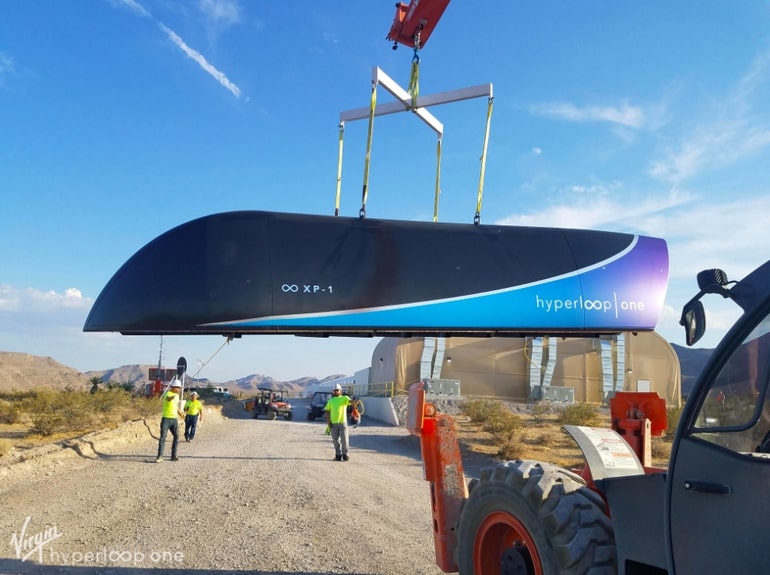 |
| Hyperloop Capsule One. Image: Virgin Hyperloop |
What is a Hyperloop?
Hyperloop is an ultra-speed transportation system for both passengers and cargo, they will be traveling in a pressurized vehicle (pods) inside the arrangement of coupled tubes.
The idea of Hyperloop was proposed by Elon Musk, the CEO of SpaceX back in 2013. It can move at high speed because it avoids two types of resistance, the usual ground-based transportation has. The air resistance is avoided because of the presence of a vacuum inside the connected tubes and as the pods are levitating in the air inside of the tubes there is also no friction between the pods and the rails.
The Hyperloop is also fully electric aims to help us in the fight against Climate change. It not only is faster but also safe and self-powering by having solar panels powering them.
How does Hyperloop work?
The idea of Hyperloop is basically removing all the elements that affect the speed of our ground-based transportation systems. The speed of a vehicle is weakened by factors like its aerodynamics and friction between the surface and the wheels of the vehicle.
These two problems could be solved by removing air from the equation and creating a vacuum. The friction between the surface and the vehicle could be avoided by levitating the vehicle. So the idea of vacuum tubes and magnetic levitation came in.
 |
| Vacuum Tunnels |
The Challenges for Hyperloop
Hyperloop promises to be fast and comfortable, is it really? Because the longer the acceleration time, the longer will be the exposure to G-forces. So the journey surely won't be comfortable at that speed.
Then the other problem is that the pods are going to be placed inside a series of connected vacuum pipes. Because of the presence of a vacuum, the pressure inside the tubes will be very high, so even a small crack in the tube could potentially risk the entire transit network.
During Earthquakes, the structure might even fall apart. We can't instantaneously halt the Hyperloop if we found a crack in the track, as it will be travelling at high speeds. The concept of Hyperloop is not only easy to implement and doesn't seem like a safer option at least for now.
When will Hyperloop be ready?
But the research and development of Hyperloops are still going on because it could change the way of our transit miraculously. Virgin Hyperloop even has a testing tube for testing the Hyperloop prototypes in the Nevada desert.
Hyperloop One Testing tubes
Even universities all around the world can test the prototypes in the tubes and take part in the Hyperloop contest conducted by Virgin One Hyperloop and SpaceX. The investments are coming in from large companies.
The latest trial run with passengers was also successful with less speed and this might be optimistic for our future. Hyperloop as a primary transportation vehicle is still far off, but the technology seems to be going in the way of this concept. But still, the fundings seems to be coming and technology seems to upgrade too. So the Hyperloop remains like reality, but the work is still in progress.




